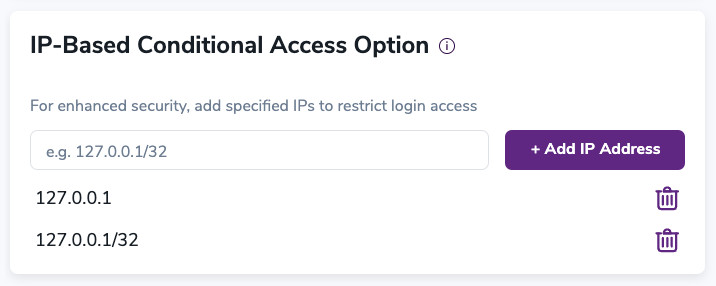SECURING YOUR ACCOUNT
Account Security
Security is top of mind for us. It’s deeply rooted in everything we do as an organization. If you received an email, it’s because we detected a sign in from an unknown IP address that accessed your account. We want to make sure your account with us is safe, so please follow our instructions below.
WHAT DO I DO IF MY ACCOUNT HAS BEEN COMPROMISED?
First, consider where the IP address location is. If it’s in a known location, it could be a co-worker signing in as you for valid reasons.
However, if the location is unknown to you, we would recommend the following steps:
- Change your email password, immediately.
- After changing your email password, change your ZeroBounce account password.
- Scan your computer for any viruses or malware.
- Enable Two-Factor Authentication on your account.
- Contact Support via support@zerobounce.net or drop us a line in the live chat. Our customer support team will escalate the issue to our billing and accounts team.
PROTECTING MY ACCOUNT WITH TWO-FACTOR AUTHENTICATION
We recommend our customers turn on Two-Factor Authentication in their account options. This requires a secondary code that you should only have access to if you need to sign in to your account.
If you are signed in, click here to turn it on: https://www.zerobounce.net/members/settings/profile
IP BASED ACCOUNT PROTECTION
Welcome to the IP-Based Conditional Access feature! This powerful tool adds an extra layer of security to your accounts by allowing you to control sign in access based on specified IP addresses. Follow the steps below to set up and manage IP rules:
Enabling IP-Based Conditional Access:
Navigate to the Settings menu and locate the "IP Based Conditional Access" option. Activate this feature to enhance the security of your accounts.

Accepted IP Formats:
Ensure that you enter IP addresses in the following accepted formats:
- 127.0.0.1
- 127.0.0.1/32
Adding and Removing IP Rules:
After successfully adding IP rules, they will be displayed under the form. Use the provided options to add or remove IP rules as needed. This allows you to fine-tune access permissions quickly.

Account Restrictions and Linkage:
Upon adding IP rules, both the admin account and all associated accounts will undergo access restrictions. Users will only be able to sign in from the specified IP addresses, providing a secure environment for your accounts.
Account Lockout and Support:
In the event of a lockout, contact our dedicated customer support. They are ready to assist you in unlocking your account promptly.
This documentation ensures a seamless and secure experience, giving you control over sign in access and safeguarding your accounts from unauthorized access.
PASSWORD EXPIRY INTERVAL
This documentation provides step-by-step instructions on how to set up and configure the password expiry interval for enhanced security of your accounts. Following these steps will enable you to specify the duration after which your chosen password will expire, prompting you to update it regularly.
- Navigate to Settings
Open the settings menu in your account and locate the "Password expiry interval" feature. Activate this feature to implement the password expiry interval for improved security.

- Set Password expiry interval
Access the "Password expiry interval" section. Enter the desired number of days for the expiry interval (minimum: 10 days). Click on "Set expiry interval" to confirm your selection.
Note: If the set value is smaller or equal to the number of days from which the account was created, you might be asked to change the password the next day.
- Confirmation
A pop-up window will appear displaying the selected expiry interval. Review the information and click "Confirm" to proceed.

Note: The initial expiration date will be calculated based on the user's last password change or account creation date.
- Disable Password expiry interval
Access the "Password expiry interval" section and locate the "Delete" option.
Open the settings menu in your account and locate the "Password expiry interval" feature. Activate this feature to implement the password expiry interval for improved security.

By following these steps, you can easily configure the password expiry interval, thereby enhancing the security of your accounts.